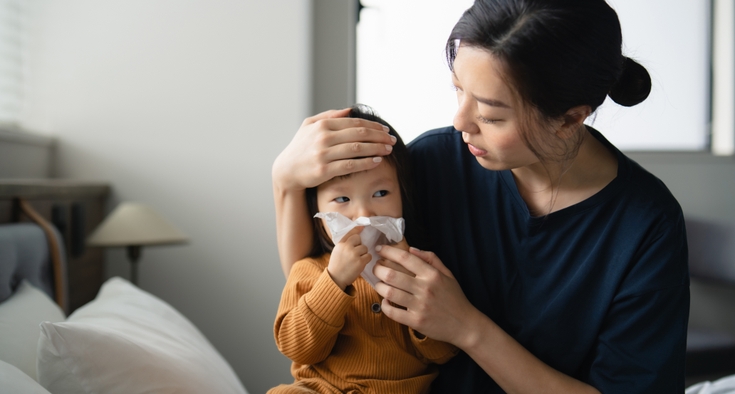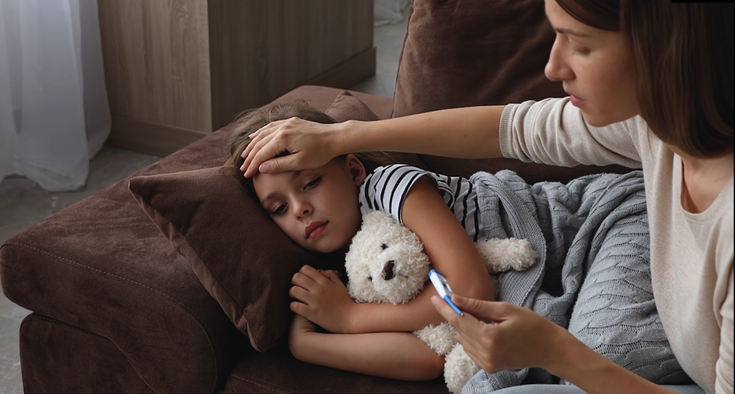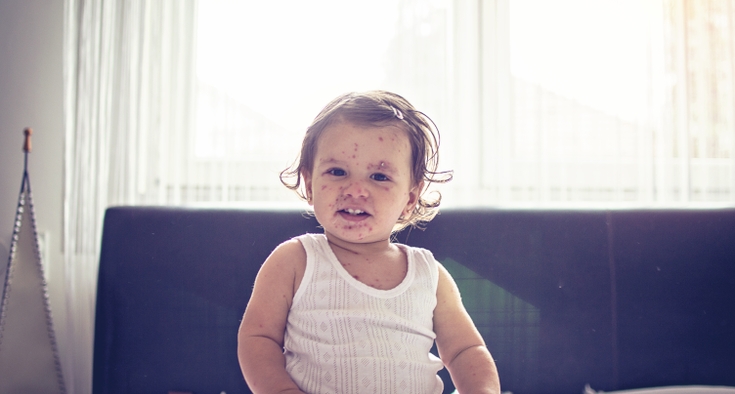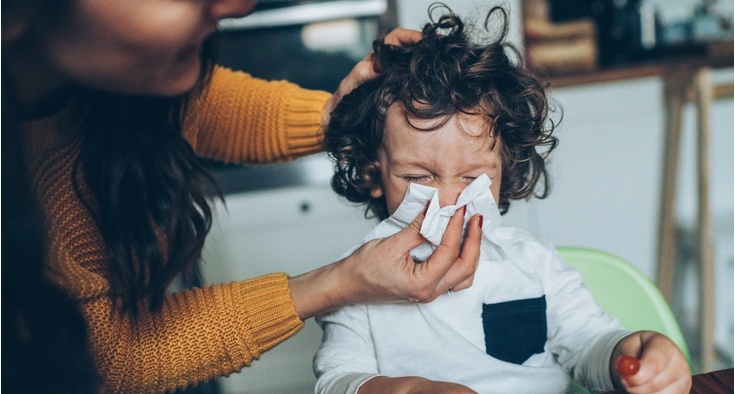When my daughter was a newborn, I was often worried that her forehead felt warm. Was she running a fever? Did I really have to deal with the rectal thermometer to check her temperature?
“When babies are that young, they have very high metabolisms and tend to be very active, so to you, they may feel warm to the touch but actually be just fine,” said Dr. Shelley Janssen, chief medical officer for Novant Health in South Carolina. “It never hurts to check their temperature, but you can base that decision on how they’re acting and if they’re displaying other symptoms. And, as you become a more experienced parent, you typically know your child and their normal temperature.”
Now that my child is 9 months old, it’s more obvious to me that she often runs warm to the touch due to her wild-child energy levels and her sensitivity to hotter temperatures (just like her dad). But every now and then I still need to bring out the thermometer. Janssen answers everyday questions about when to check your kid’s temperature, when it’s time to call their pediatrician or head to the emergency room, and more.
When is it a good time to check your child’s temperature?
If your child is not as active as usual, is fussy or cranky, is not feeding or eating as well, or is showing signs of illness such as vomiting or diarrhea, congestion or coughing.
What types of thermometers are best for each age group?
While there’s a lot of unnecessary
- Newborns under 3 months: Use a rectal thermometer (inserted into the rectum), which is the most accurate for this age group. The thickness of a baby’s skin can affect a surface reading, as well as their surface temperature, which varies more depending on the environment they’re in. Second best: You can also use a tympanic (ear) thermometer if you’re able to get a straight shot into the eardrum, but you may have to pull the ear up a bit. Overall, this is harder with squirmy babies.
- Kids 3 months to 3 years: An ear thermometer or temporal (forehead) thermometer is ideal because they’re quick and noninvasive.
- Kids 4 and older: An oral (under the tongue) thermometer is ideal because it offers a more accurate internal reading, and kids can generally sit still and follow directions at this age.
Need care right away? Find urgent care near you.
What
100.4 degrees Fahrenheit. Normal body temperature is usually 98.6 F.
If you don’t have the right thermometer for your child’s age, how do you adjust the
If you’re in a bind and only have one type of thermometer on hand when you’re traveling, for example, you can still take your child’s temperature. It helps to know how to adjust the final number for a more accurate estimation of their internal temperature.
- Oral reading: Usually 0.5-1 F lower than rectal
- Ear: Close to rectal, but less accurate if the placement isn’t right
- Forehead: Usually 0.5-1 F lower than rectal
What should you be watching for when monitoring a fever at home?
- Make sure your child is drinking plenty of liquid (water, electrolytes and Popsicles for kids over age 1, formula or breast milk for babies under 1).
- Look out for 8-10 wet diapers (or trips to the toilet), depending on what is normal for your child.
- Look out for any concerning symptoms such as difficulty breathing or excessive drowsiness.
- Make sure your child’s temperature is not reaching significant or emergency levels.
When is a fever considered
- Newborns under 3 months: Any fever is a concern over 100.4 F rectally. Why: They don’t have fully developed immune systems yet and they haven’t received enough vaccinations for good protection. So a doctor needs to make sure nothing serious is going on that needs to be addressed.
- Babies 3 months to 3 years: Anything over 102.2 F is considered a significant temperature, particularly if it’s accompanied by other concerning symptoms such as excessive drowsiness, infrequent urination, vomiting, diarrhea or difficulty breathing.
- Over 3 years: 104 F is significant, particularly if accompanied by those same concerning symptoms, or a fever of 102.2 F that’s persistent for 2-3 days or accompanied by those concerning symptoms.
What steps should you take if your child has a significant fever?
If your child has a significant fever and is having difficulty breathing or appears less responsive, go to the emergency room. Otherwise, it’s best to call your pediatrician first because many of them have after-hours care, and they have your child’s medical records and vaccine history. If your child is unable to be seen by their pediatrician in a reasonable amount of time, take them to an urgent care or an emergency room. Doctors at Novant Health urgent care offices see children at age 6 months and older.
When monitoring a fever at home, how often is it reasonable to check your child’s temperature?
If you’re using medication, check 30-60 minutes after each dose. Otherwise, discomfort is a sign that it’s a good time to check your child’s temperature again.
Should you treat a typical fever?
With a normal viral illness, fever is part of that process. Unless your child is uncomfortable, it’s not necessary to treat a fever. For example: There’s no need to wake them up in the middle of the night to check their temperature if they’re sleeping peacefully. If they wake up and are uncomfortable, they’ll let you know.
What are helpful steps if you decide to treat a fever?
Depending on age, there are several ways to try to bring a feverish child’s temperature down. Cold drinks, lukewarm baths, and removing the covers in bed or avoiding swaddles can help reduce heat and make them more comfortable. Tylenol (check the package for directions) and ibuprofen (talk to your pediatrician for a recommended dosage) can help. After using medication, wait 30-60 minutes to check their temperature again, so the medication has had a chance to work.
When is a fever a good thing?
Fever is not a disease in and of itself, it’s a symptom of an illness or a sign that the body’s immune system is gearing up and fighting off something. After vaccines, it’s normal to have a low-grade fever, but not for more than 48 hours and not at the significant temperatures listed above.
Does teething cause fevers?
When teething, some kids may have a slightly elevated temperature, but usually not to the point of fever.
Why is it important for your child to not be around other kids when they have a fever?
Fever is a symptom of the body fighting off an infection. Children in a day care or school settings are close together, so sicknesses can spread rapidly. If your child has a fever, it’s best to keep them at home for their comfort as well as the comfort of other kids.













